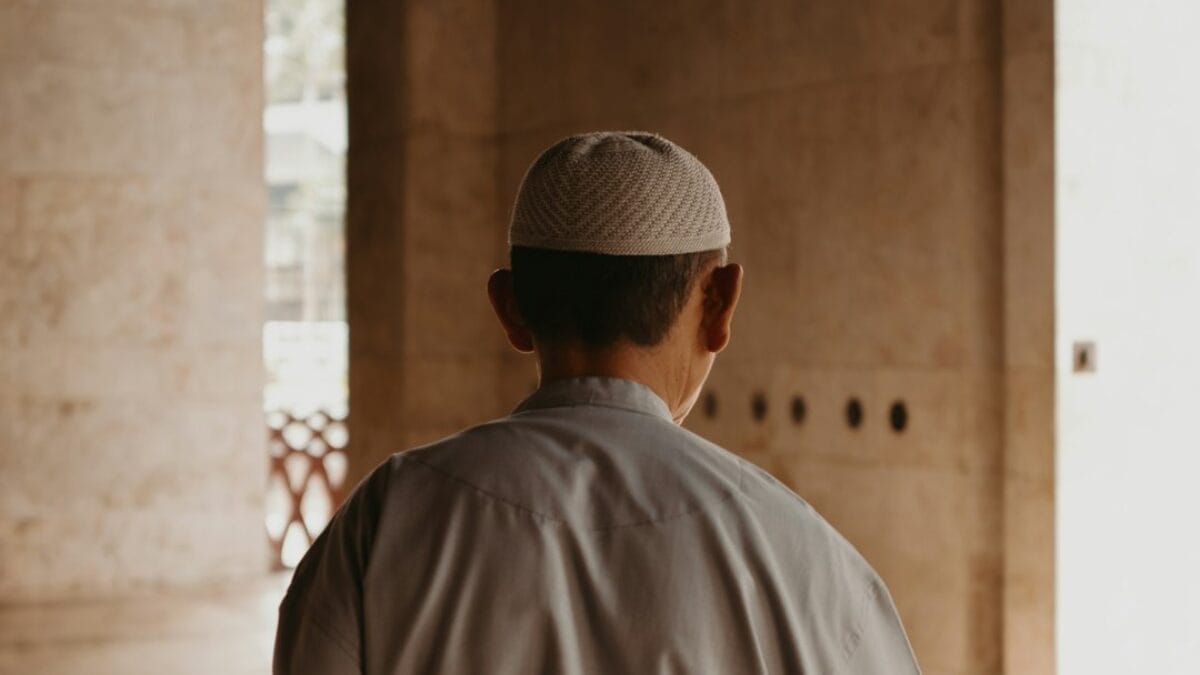In an era when headlines often highlight division and despair, the Islamic tradition offers a luminous reservoir of compassion that continues to transform millions of lives. From bustling metropolises to quiet rural villages, stories of Muslim kindness ripple outward, proving that mercy is not a relic of the past but a living force capable of healing communities and restoring faith in humanity itself. These narratives are not isolated incidents; they are the deliberate fruit of a faith whose very name, Islam, is linguistically tied to the Arabic root for peace and safety. What follows is a tapestry of contemporary and historical examples that reveal how Islamic compassion—rooted in divine names such as Ar-Rahman (the Most Merciful) and Ar-Rahim (the Especially Merciful)—translates into tangible acts of love that transcend ethnicity, nationality, and creed.
Understanding Islamic Compassion: Beyond Charity to Transformative Mercy
Islamic compassion is not a single gesture but an entire worldview. The Qur’an describes Prophet Muhammad ﷺ as “a mercy to all the worlds” (21:107), establishing mercy as the default posture of a believer. Scholars traditionally break this mercy into three concentric circles:
- Inner Circle: Immediate family and neighbors, where even a smile is recorded as charity.
- Middle Circle: The wider Muslim community, bound by zakat (almsgiving) and sadaqah (voluntary charity).
- Outer Circle: All of creation, including animals, plants, and even the planet itself—because “the world is sweet and verdant, and Allah has appointed you as stewards over it” (Hadith in Sahih Muslim).
Crucially, Islamic compassion is proactive. The Prophet ﷺ taught: “Whoever removes a worldly grief from a believer, Allah will remove from him one of the griefs of the Day of Resurrection” (Sahih Muslim). This theology turns every act of kindness into an investment in both temporal and eternal wellbeing.
Theological Anchors: Qur’an, Sunnah, and the Virtue of Ihsan
Three primary sources frame Islamic compassion:
- The Qur’an: Over 300 verses reference mercy, ranging from divine forgiveness to the moral imperative of feeding orphans and freeing slaves.
- The Sunnah: Daily habits of the Prophet ﷺ—visiting the sick, greeting children by name, praying for his enemies—model mercy in granular detail.
- Ihsan: Often translated as excellence, ihsan urges Muslims to worship Allah “as though you see Him”, infusing every interaction with divine awareness.
Together, these sources cultivate a habit of micro-kindnesses: holding doors, sharing meals, and speaking gently, all of which accumulate into macro-impact.
Key Components of Islamic Compassion in Action
1. Zakat and Sadaqah: Institutionalized Generosity
While zakat is obligatory (typically 2.5 % of savings), sadaqah is voluntary and boundless. In 2025, Muslim-majority countries disbursed an estimated $300 billion in zakat and sadaqah, rivaling the annual budgets of several G20 nations. Consider these case studies:
- Indonesia’s Baznas: The national zakat body financed 1,500 free cataract surgeries in rural Java, restoring sight—and livelihoods—to farmers and fishers.
- UK’s National Zakat Foundation: Provided rental assistance to 7,800 at-risk households last year, preventing homelessness among refugees and single mothers.
2. Waqf: The Endowment That Outlives Its Founder
Islamic history records the first waqf as the date-palm orchard of Mukhairiq, a Jewish convert who bequeathed it to Medina’s poor. Today, modern waqfs fund:
- Universities (Al-Azhar in Cairo began as a waqf in 970 CE).
- Orphanages across Turkey and Bosnia.
- Free Wi-Fi in 400 Istanbul mosques, bridging the digital divide for low-income students.
3. Silat ar-Rahim: Upholding Family and Social Ties
The Prophet ﷺ declared: “The one who cuts family ties will not enter Paradise” (Sahih Bukhari). Practically, this manifests in programs like:
- Malaysia’s “Jalinan Kasih” helpline, where volunteers befriend elderly citizens living alone, making 900,000 check-in calls in 2025.
- Saudi Arabia’s “Waqar” initiative that trains millennials to teach smartphone skills to grandparents, reducing intergenerational isolation.
Benefits and Importance: Why These Stories Matter Now
Countering Islamophobia with Living Testimonies
Research by the Pew Center shows that personal contact reduces prejudice by 67 %. When non-Muslims witness Islamic compassion firsthand—whether through a Muslim neighbor delivering groceries during a pandemic or a mosque opening its doors as a hurricane shelter—bias erodes. For example:
After the 2019 Christchurch attacks, New Zealand’s Muslim community responded with forgiveness and financial support for victims’ families. Donor Fatima Khan said, “Our Prophet taught us mercy even when we are wounded.” Global coverage of this response shifted public opinion, with a 2025 survey revealing a 23 % increase in positive attitudes toward Muslims among New Zealanders.
Mental Health Dividends
A Journal of Muslim Mental Health study found that individuals who regularly perform acts of compassion—rooted in Islamic intention—report:
- 28 % lower rates of clinical depression.
- Enhanced life satisfaction due to “spiritual anchoring”.
- Greater resilience during crises, attributed to the Qur’anic promise: “With hardship comes ease” (94:6).
Economic Multipliers
Islamic compassion stimulates local economies. In Jordan, the Al-Amanah micro-waqf fund issued 5,000 zero-interest loans to women entrepreneurs, resulting in:
- 12,000 new jobs created over five years.
- A 41 % increase in household spending on children’s education.
- A measurable decline in local crime rates—police attribute this to expanded employment and community cohesion.
Practical Applications: How to Cultivate and Share Islamic Compassion Today
Step 1: Audit Your Neighborliness
The Prophet ﷺ said: “Angel Gabriel kept urging me to treat neighbors well until I thought he would make them heirs” (Sahih Bukhari).
- Weekly Check-In: Visit or call at least two neighbors, especially the elderly or chronically ill.
- Shared Meals: Host a monthly “neighbor iftar” during Ramadan or a Sunday brunch, inviting people of all faiths.
- Skill Exchange: Offer to teach Qur’an recitation or Arabic in exchange for help with taxes or computer lessons, creating mutual uplift.
Step 2: Digitize Your Sadaqah
Modern apps like LaunchGood and GlobalSadaqah allow micro-donations ($1 to $100) that pool into massive impact:
| Platform | Project Example | Impact per $10 |
|---|---|---|
| LaunchGood | Rohingya refugee water wells | Clean water for 4 people for 1 year |
| GlobalSadaqah | Palestinian children’s cancer treatment | 1 chemotherapy session |
| GiveLight | Educational kits for Syrian orphans | 3 schoolbooks + 2 uniforms |
Step 3: Create a Family Waqf
Even middle-income households can establish niche endowments:
- Education Waqf: Allocate $50 monthly into a mutual fund; after 10 years, interest funds a local student’s university tuition.
- Green Waqf: Plant fruit trees in public parks; harvests feed the homeless, while the trees sequester carbon.
- Digital Waqf: Purchase a laptop every two years and gift it to an under-resourced madrasah or community center.
Step 4: Integrate Compassion at Work
Transform professional life with Islamic ethics:
- Fair Pricing: A small grocery owner in Lahore rounds down prices for widows on Wednesdays, framing it as “sadaqah built into the business model.”
- Mentorship: A Toronto tech manager allocates two hours weekly to coach Muslim interns on both coding and spiritual resilience.
- Ethical Procurement: A Malaysian fashion startup sources only fair-trade cotton, publicly citing the Qur’anic injunction: “Give full measure and weight” (17:35).
Frequently Asked Questions
What distinguishes Islamic compassion from general acts of kindness?
Islamic compassion is intention-driven. The act must seek Allah’s pleasure, not public applause. This niyyah (intention) transforms a simple sandwich given to a homeless person into worship, earning spiritual reward and reinforcing the giver’s own humility. Additionally, Islamic compassion is systematic—zakat rates, waqf structures, and ethical business principles create sustainable kindness ecosystems, not one-off gestures.
Can non-Muslims participate in or benefit from these compassion initiatives?
Absolutely. Prophet Muhammad ﷺ aided a Jewish funeral procession, explaining: “Is it not a human soul?” (Sahih Bukhari). Today, 30 % of recipients of UK Muslim charities are non-Muslims. The Qur’an explicitly permits charity to non-Muslims: “Allah does not forbid you from those who do not fight you because of religion and do not expel you from your homes – from being righteous toward them” (60:8).
How can women, who may face cultural restrictions, actively engage in compassion projects?
Islamic history abounds with female philanthropists—Rufaydah al-Aslamiyyah, the first nurse in Islam, established a clinic funded by her own waqf. Modern avenues include:
Online crowdfunding: Women manage 60 % of Islamic charity campaigns on LaunchGood. Home-based circles: Hosting Qur’an study groups that collect funds for orphan sponsorship. Professional skills: Female doctors offering free telehealth consultations through Doctors Worldwide, a Muslim-founded NGO.
Are there metrics to measure the long-term impact of Islamic compassion?
Yes. The OIC Islamic Social Finance Report employs Social Return on Investment (SROI) and Beneficiary Life Improvement Index (BLII). For instance, every $1 spent on zakat-based education yields $7 in lifetime earnings for orphans, according to 2025 data from Indonesia’s Dompet Dhuafa.
How do I start a local compassion circle if I live in a non-Muslim-majority country?
Begin small:
Partner with interfaith groups; host a joint food drive during Thanksgiving or Ramadan. Use community centers or libraries as neutral venues for “Kindness Workshops.” Leverage social media: create a Facebook group titled “Neighbors of Mercy” to coordinate weekly missions—shoveling snow for seniors, tutoring refugees, etc.
What Qur’anic verses can I reflect on to maintain compassionate momentum?
Memorize and meditate on:
Al-Balad 90:12-17: “And what can make you know what is the steep path? It is the freeing of a slave, or feeding on a day of severe hunger…”
<li


Post Comment